Air-to-Air Missiles Are Shooting at Russian Helicopters and Drones in Ukraine
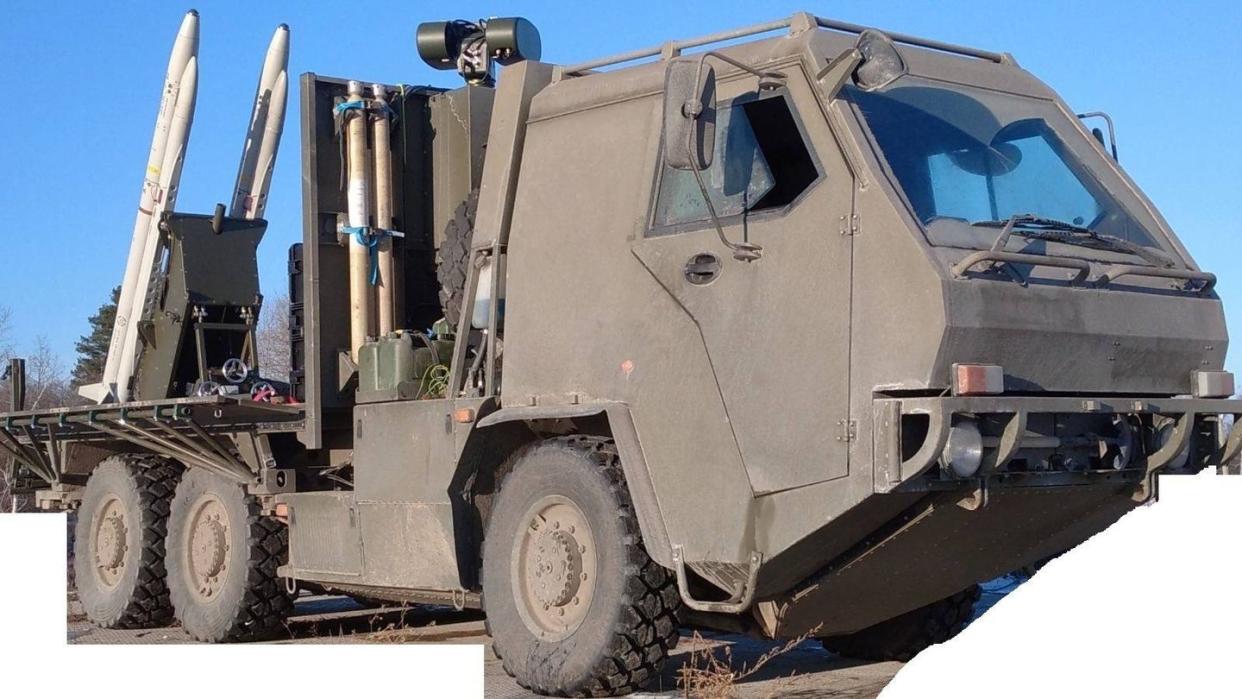
ASRAAM stands for Advanced Short-Range Air-to-Air Missile—in other words, it’s a missile designed to be fired by a jet fighter while within visual range of another aircraft.
But over two decades after entering RAF service, the missile is seeing its first major combat test in ways its designers surely didn’t expect. It’s being launched from on top of a SupaCat truck operated by Ukraine’s military, plinking at Russian drones, missiles and helicopters.
ASRAAM only saw its first combat on Dec. 14, 2021, when a Cyprus-based RAF Typhoon jet used one to down an attacking drone near the U.S. base in At Tanf, Syria. While usually very slow, drones can be tricky for infrared-guided missiles to acquire due to the lack of a hot jet engine.
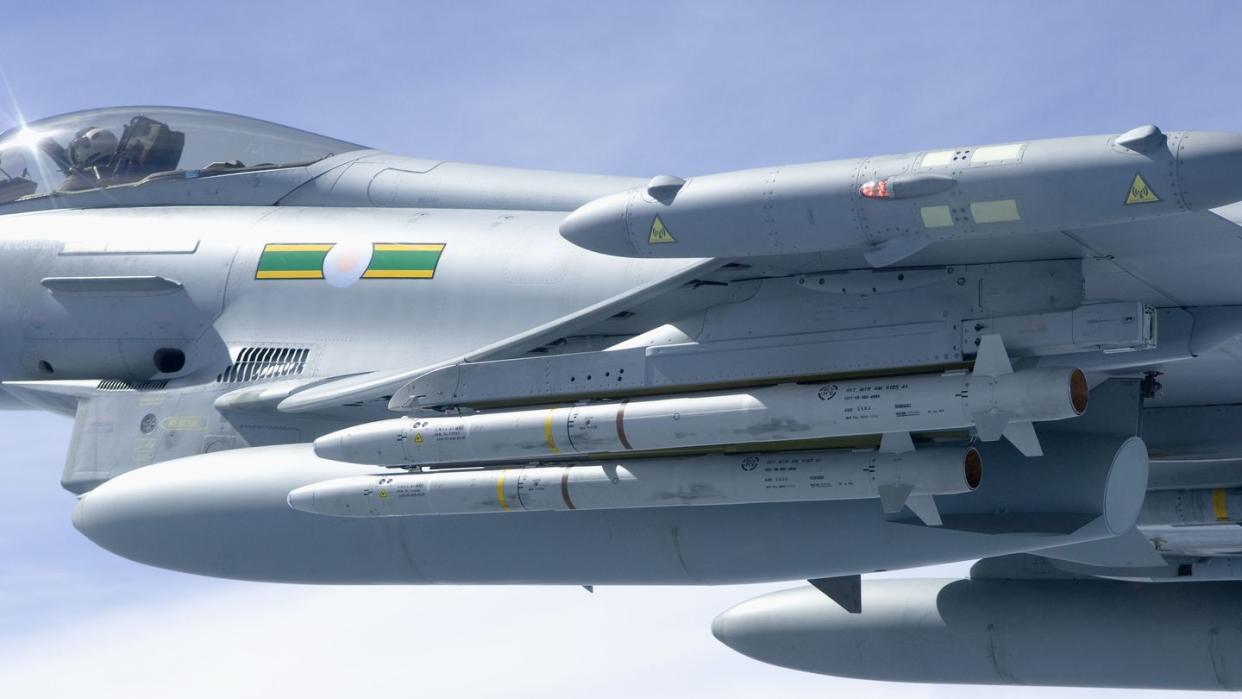
The Syria shoot-down proved to be a harbinger of what was to come. Last month, a Ukrainian air defense colonel told The Times’s Maxim Tucker that a “handful” of these systems were given to Ukraine, where they have primarily been assigned to protect Ukrainian cities by downing attacking Shahed-136 kamikaze drones. However, some ASRAAM trucks were also deployed near the frontlines to snipe at Russian helicopters harrying Ukraine’s counteroffensive.
On social media, Tucker added the ASRAAMs were “effective against Shahed drones, but also Russian attack helicopters near the frontline. Kyiv loves them, and needs more.” This language implies ASRAAM is already responsible for kills against Russian aircraft and munitions.
A censored picture released by Ukraine’s military shows a Supacat HMT-600 truck with a twin-rail launcher on its flatbed loaded with two ASRAAM missiles. A vertically extendible rotatable sensor turret is also visibly installed just behind the rear vehicle cab, presumably for target acquisition and targeting.
According to Think Defence, this appears to be a Chess Dynamics Hawkeye surveillance system mounted on a Viper telescoping mast. The top-mount array combines a Short Wavelength Infrared (SWIR) camera, a laser designator, rangefinder and targeter, a high-resolution 640p Piranha 46 optical camera with up to 30x magnification, and a high-definition third-generation cooled thermal imager.
💥 KA-52 heli, luckily misses a locked on missile by using flare system. Wagners 🇷🇺 missed this time 💥#Prigozhin #war #RussiaCivilWar #footage pic.twitter.com/YgYrESlh6W
— Graphite 🇵🇱🦅⚔️ (@Graphite1X) June 25, 2023
As the RAF began phasing in new-generation Block 6 ASRAAMs in 2022, it may have had a few qualms about giving away older ASRAAMS about to be retired.
How effective could ground-launched ASRAAMs be?
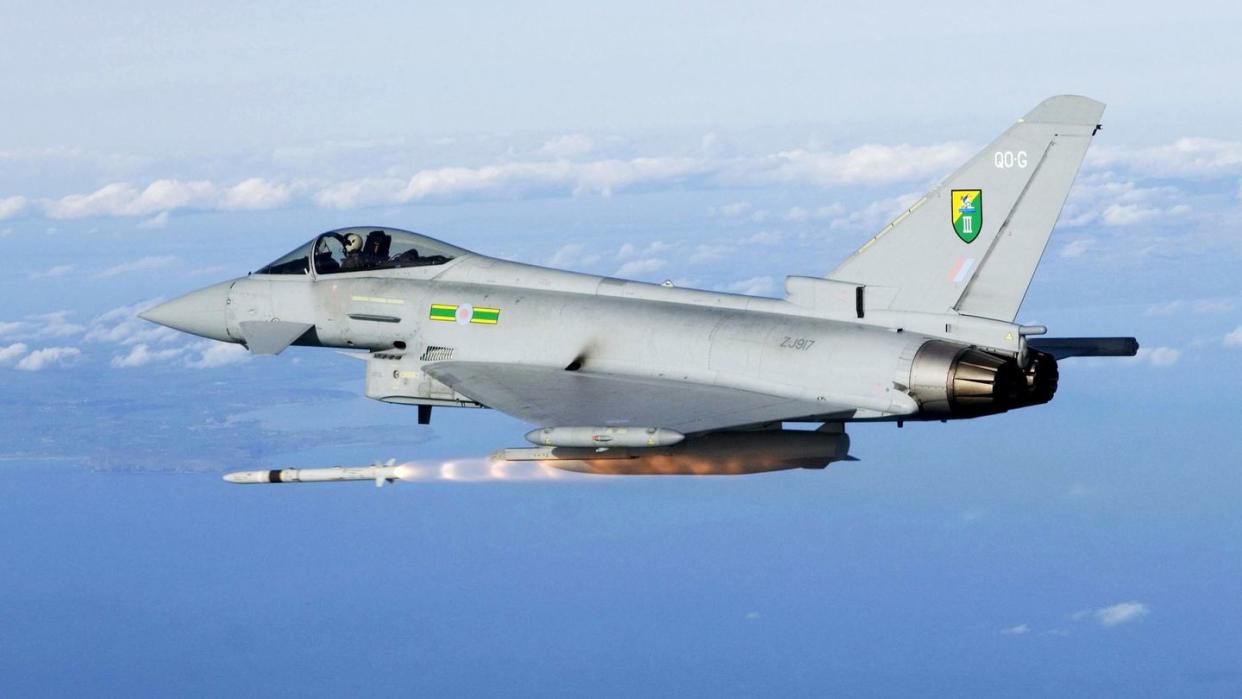
It’s hardly unheard of for air-to-air missiles to be ported onto ground-based systems, though they’re ideally modified to compensate for the additional speed and altitude they need to make it back, and to ensure that the missile’s rocket motor doesn’t fry the ground-based launcher.
Ukraine’s new ASRAAM trucks apparently use the unmodified base missile. Such improvised solutions help stave off the depletion of Ukraine’s former Soviet air defense missile stocks that are stressed from coming under daily attack on the home front by a mix of cheap drones and high-end cruise missiles—and attack helicopters and attack jets on the frontline.
An air-launched ASRAAM can fly up to three times the speed of sound to engage aircraft over 15.5 miles away—but some sources claim that “over” actually means twice as far, ie. 31 miles. That would allow ASRAAM to double as a medium-range missile as well.
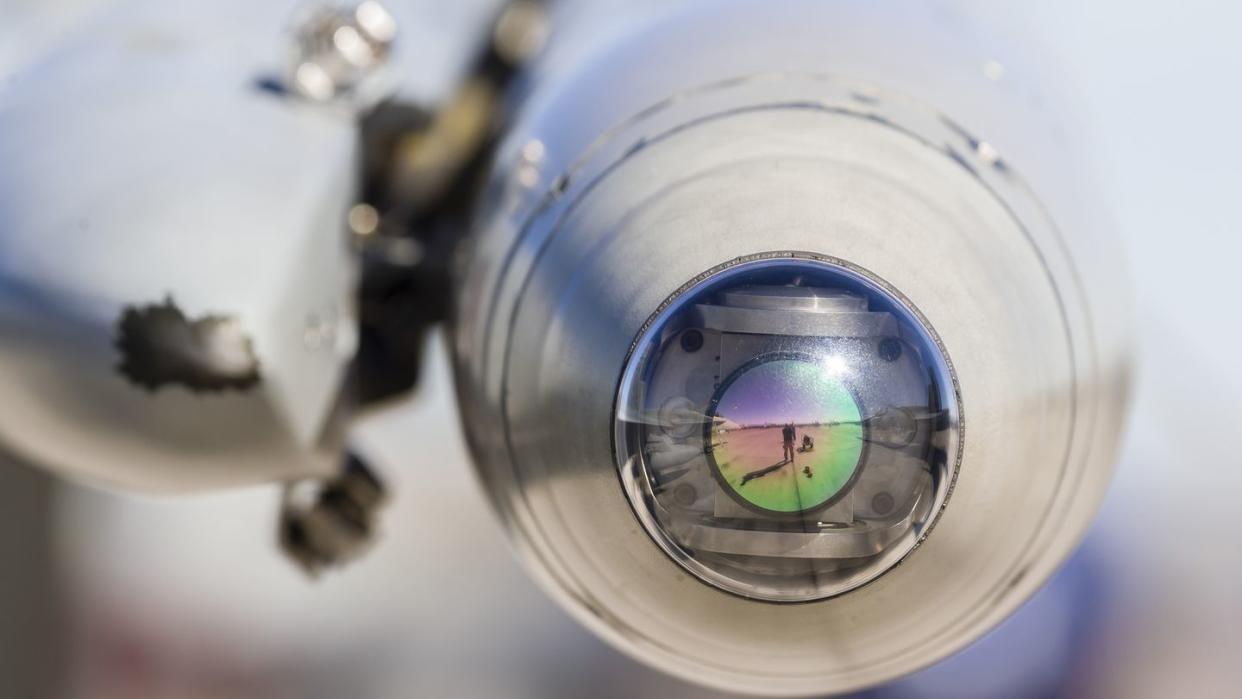
ASRAAM’s infrared seeker undoubtedly has a shorter effective range against typical target aircraft than the missile itself—8-11 miles by one estimate. So, for more distant shots, the missile is initially directed via a two-way datalink—perhaps based on approximate target coordinates acquired separately by radar—until the missile’s seeker acquires the target. An inertial navigation system provides course-corrections towards the target’s projected location prior to lock-on. The missile’s 22-pound warhead is triggered using a laser proximity fuse immune to radar jamming.
Compared to the rival AIM-9X Sidewinder short-range missile already employed by Ukraine in their NASAMS air defense batteries, ASRAAM lacks a thrust-vectoring rocket motor designed for ultra-maneuverability. But ASRAAM has a 20% higher maximum speed and is distinguished by its longer range and ability to lock onto targets after being launched, unlike first-generation AIM-9Xs. That may facilitate the fast kill chain needed to detect and attack Russian helicopters and jets performing quick pop-up attacks at low altitude.
Of course, Ukraine’s ground-launched ASRAAMs will unavoidably have much shorter range and ceiling without the speed and altitude boost from being attached to an airborne fighter. A useful reference is the radar-guided CAMM Sea Ceptor/Land Ceptor short-range surface-to-air missiles, based upon ASRAAM’s rocket motor and fuselage. Used on Royal Navy warships and British Army Sky Sabre air defense batteries, basic CAMMs weigh only about 13% more (218 pounds) than ASRAAM, and have a claimed maximum range of 16 miles, and intercept altitude of 33,000 ft.
Assuming the lighter ASRAAM falls somewhat short of CAMM’s surface-launch performance—say somewhere between 9 and 15 miles—they still would have enough reach to threaten Russia’s jets, drones, and missile-armed helicopters at medium altitude. Bear in mind, though, that maximum-range missile engagements are usually only viable under ideal circumstances.
Ukrainian frontline combat units particularly lack modern, mobile medium-range (or high-end short range) air defenses that can accompany advancing troops and scoot away after firing to avoid retaliatory attacks. ASRAAM should have just enough reach to engage Russian attack helicopters—most commonly, Ka-52s—that are using Vikhr and LMUR missiles (ranges 7-8 miles) to pick off Ukrainian armor at long distances.
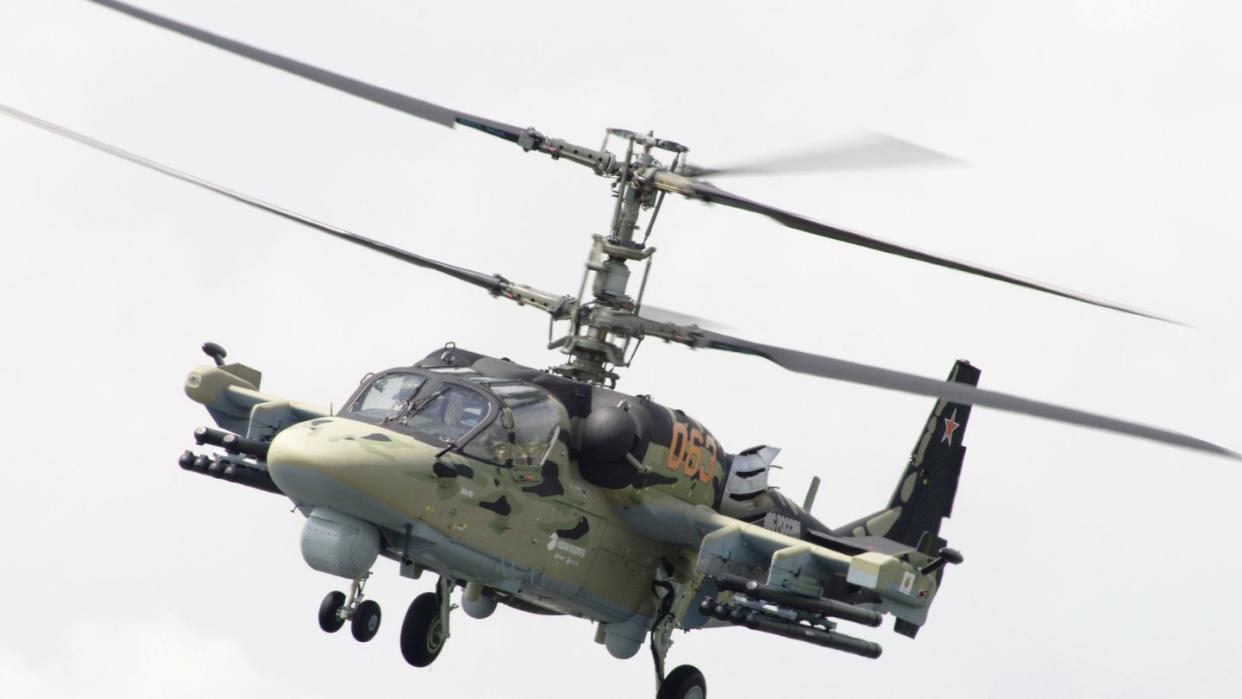
Furthermore, a 2022 report by the UK’s RUSI think tank reported that countermeasures employed by Russian helicopters are actually quite effective at defeating heat-seeking missiles like Stinger or Igla, even though some still get through. Against infrared-guided missiles, the Ka-52’s President-S defensive suite boasts a Missile Approach Warning sensor, automatically triggered flare dispensers, and two directional infrared jamming pods (DIRCMs) on each fuselage side.
Perhaps ASRAAM’s more decoy-resistant seekers are what’s needed to overcome those countermeasures.
The Supacat swatting at Russia’s tanks and helicopters
The Supacat High Mobility Transporter (HMT) is a lightweight multi-role truck with variable, independent suspension for all-terrain mobility coming in both HMT-400 4x4 and HMT-600 6x6 configurations.
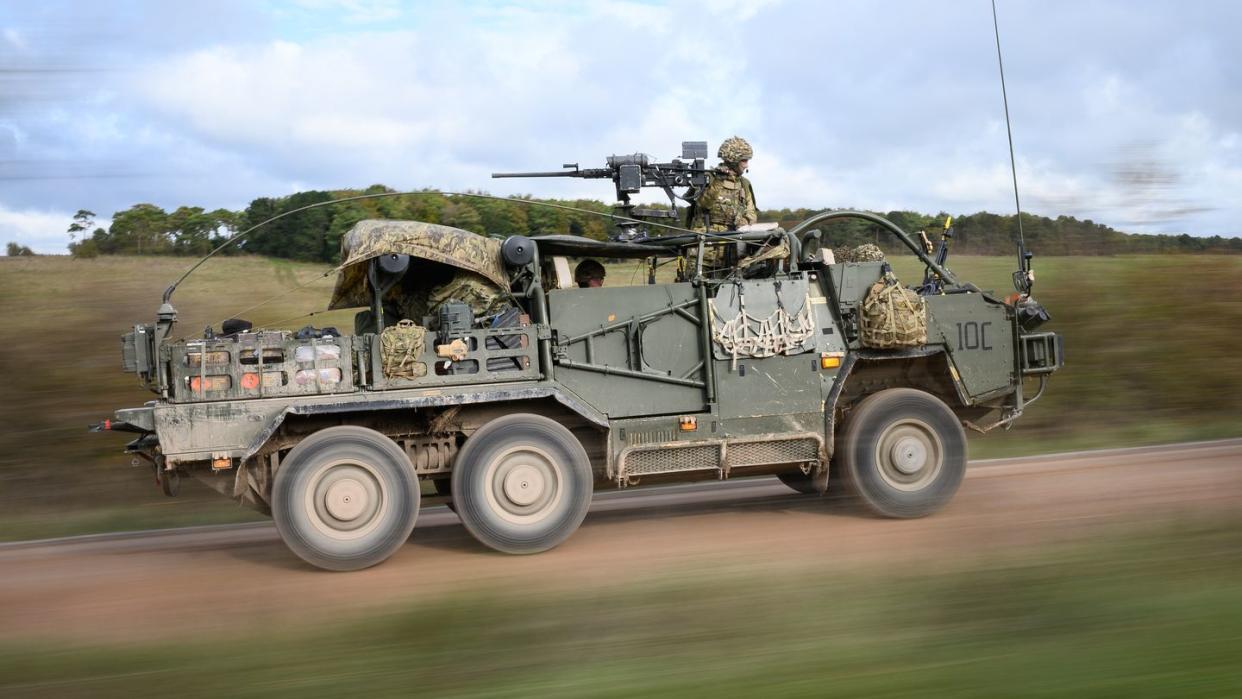
British, Australian and U.S. (Delta Force) special operations forces have all procured HMT-400s. The British Army also operates HMT-based 4x4 Jackal and Jackal 2 troop carriers armed with two machine guns each, 6x6 Coyote Tactical Support Vehicle (TSV-L) with capacity for 1.5 tons of cargo, and it once procured 35 6x6 Soothsayer electronic warfare trucks before canceling the type. It’s believed Ukraine’s ASRAAM-trucks are ex-Soothsayers.
Ukraine has already received “dozens” of HMT-600-based Wolfram vehicles used to launch supersonic Brimstone anti-tank missiles, another originally aircraft-based weapon. Each Wolfram hefts a boxy launcher with cells to launch eight Brimstones (out of over 600 donated), with an effective range of 12 miles, or 24 miles using Brimstone 2s.
The Independent have reported that "several dozen" Wolfram vehicles have been provided to #Ukraine. These are Supacat HMTs mounted with an 8 cell Brimstone launch module.
This is the evolution of the commercial vehicles & and hoc launchers seen in use in Ukraine. 1/ pic.twitter.com/V5oKRELdSD— Historical Firearms | Matthew Moss (@historicfirearm) July 23, 2023
Use of the HMT-600 chassis for ASRAAM should also ease some of the logistical complications for Ukraine as it fields yet another novel SupaCat missile-carriers.
ASRAAM’s origins: to build a better Sidewinder?
In the 1980s, Germany, Canada, Norway and United Kingdom partnered on a short-range infrared-guided air-to-air missile hoped to replace the very long-serving American AIM-9 Sidewinder heat-seeking missile. The U.S. military also intended to procure this Sidewinder successor under the designation AIM-132.
By the 1990s, however, only the UK was left to complete development of the weapon at a cost of £823 million, while the U.S. instead procured the indigenous, radically modernized AIM-9X Sidewinder missile.
ASRAAM and AIM-9X both shared a key new capability: executing high-off-boresight (HOBS) attacks up to 90 degrees to each side using a helmet-mounted sight. That means a pilot could simply turn his head to target and launch an ASRAAM missile at an aircraft flying directly beside them, rather than having to point the plane’s nose at the target.
Both missiles also used the same Hughes sapphire-domed infrared imaging seekers, which are very effective at discriminate against decoys or infrared jammers.
However, the ASRAAM’s larger 6.5” diameter motor and low-drag design gave it a range and speed advantage compared to the first-generation AIM-9X with its 5” diameter thrust-vectoring rocket (size necessary to preserve the legacy Sidewinder’s form factor).
This was because ASRAAM was designed according to a different philosophy—that the pilot who manages to shoot first wins, even in short-range combat. Thus, it’s optimized to engage enemies during the ‘pre-merge’ approach, before the enemy’s short-range missiles are within range.
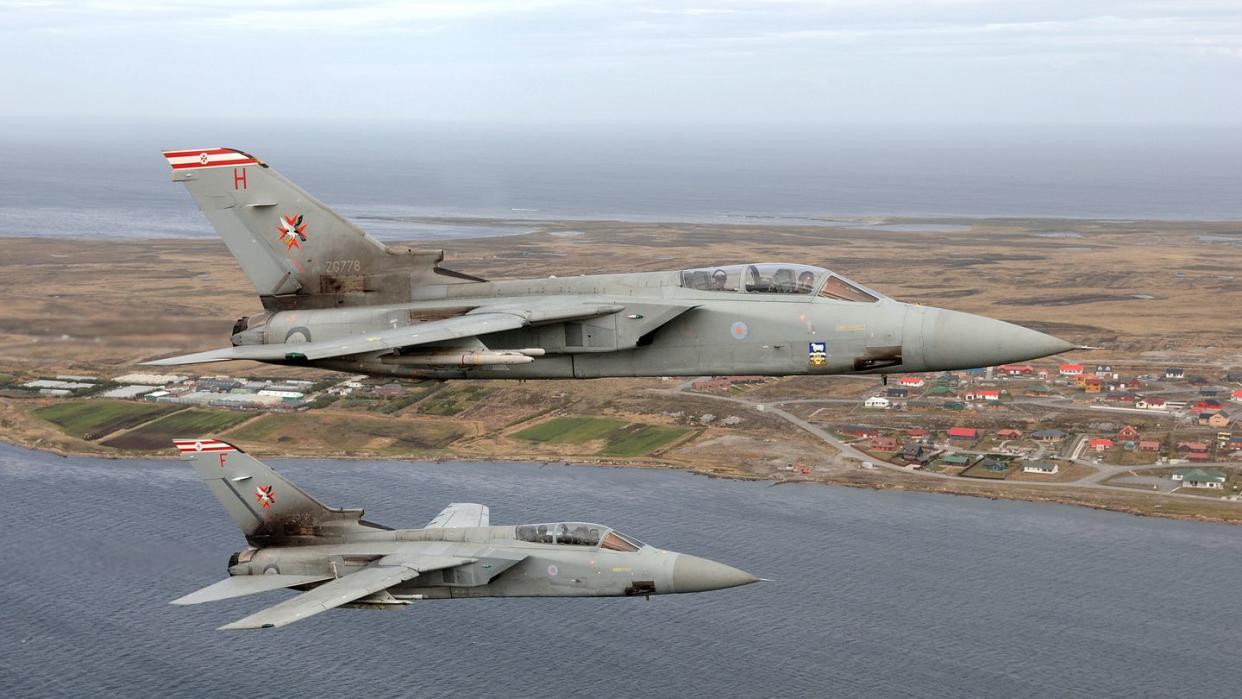
Presently, ASRAAM is integrated onto RAF Typhoon fighters and F-35B Lightning stealth jump jets, while the Indian Air Force has ASRAAM on its aging Jaguar strike jets and may eventually integrate them onto Russian-built Su-30MKI fighters and indigenous Tejas jets.
Australian FA-18 Hornets used to carry ASRAAMs, but both plane and missile were fully retired. Canberra might still consider sending retired ASRAAM inventory to Ukraine.
The new ASRAAM Block 6 model incorporates technology developed for CAMM, includes cryogenic internal instead of external cooling, and boasts a new higher-resolution British seeker—meaning it’s no longer subject to U.S. arms control restrictions preventing sales to, say, Saudi Arabia. The improved seeker can even be used as an expendable infrared-search-and-track system while still being rail-mounted.
However, Block 6 faces stiff competition from the second-generation AIM-9X Block II, which matches ASRAAM’s formerly unique edges by increasing range 50-60% and incorporates lock-on-after-launch capability. ASRAAM does appear cheaper, allegedly costing £200,000 ($254,000 USD) per missile compared to $380,000 to $400,000 for AIM-9X Block IIs.
You Might Also Like
